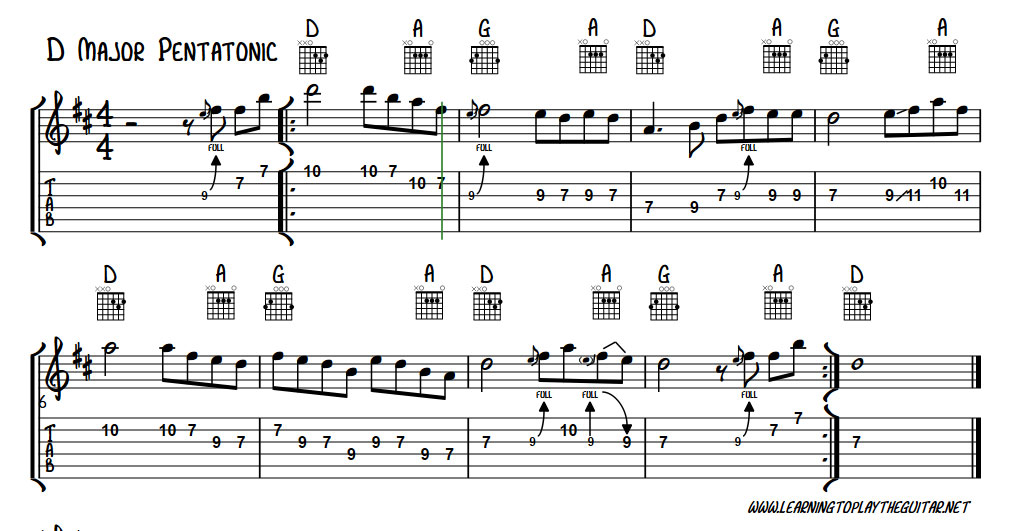Like a reversible jacket or shirt the pentatonic scale has 2 sides giving you 2 scales for the price of 1! So if you’ve learnt one scale you already know the other one. The most commonly used and learnt version is the minor pentatonic scale which works well in blues, rock and other styles of music. However do you know what this scale also has a major side for songs in a major key?
For example if you’re learnt the B minor pentatonic scale these same notes (B D E F# A) are also the notes of the D major pentatonic scale. Play the same scale pattern but start and end on the D note and it becomes the D major pentatonic scale. This becomes more obvious if you play the scale over a D major chord or a song in the key of D major.
The guitar solo below is duplicated with the first using notes of the B minor pentatonic and the second the D major pentatonic scale. How can this be when they’re exactly the same? The difference is that B minor pentatonic is played over chords outlining the key of B minor while the D major pentatonic is played over chords in the key of D major. While the 2 solos sound the same the context of music behind them change creating a different sound.
Listen to the audio of The B Minor Pentatonic Solo. |
| D Major Pentatonic Solo | Download Listen to the audio of The D Major Pentatonic Solo. |
So now you can hear the difference in the sound of 2 scales that use exactly the same notes. The B minor pentatonic scale has a sad and bluesy while the D major pentatonic scale has a happy country music sound.
To work out which version of the pentatonic scale to use you need to determine the key of the song you are going to solo over. The best way to do this is to work out the final chord (AKA the I chord) of the song. The chord should sound or feel like going home when the song finishes. So if the song ends comfortably on the D major chord the song is in the key of D major which means that you would use the D major pentatonic scale. It’s that simple! For more about the I chord check out What are I IV V (1 4 5) Chords and Why Should You Care? http://www.learningtoplaytheguitar.net/what-are-i-iv-v-1-4-5-chords-and-why-should-you-care/
Sometimes you can also mix and match the major and minor pentatonic scales in the same song. For example for a blues in A you can play the A minor pentatonic AND the A major pentatonic scale. Eric Clapton, Slash and others do this all the time. For a great example of this check out Clapton’s solo in Crossroads of Cream’s Wheels Of Fire album. In his solo he starts on the A major pentatonic scale (A B C# E F#) at 1:27 and then changes to the A minor pentatonic scale (A C D E G) at 1:36.
This mixing of pentatonics won’t work for every song but it does work well in a 12 bar blues based on dominant 7 chords (e.g. A7 D7 E7 for a blues in A) as they contain notes from both the major and minor pentatonic scales. So now that you’ve discovered the 2 sides of the pentatonic scale mix and match where it’s appropriate.



